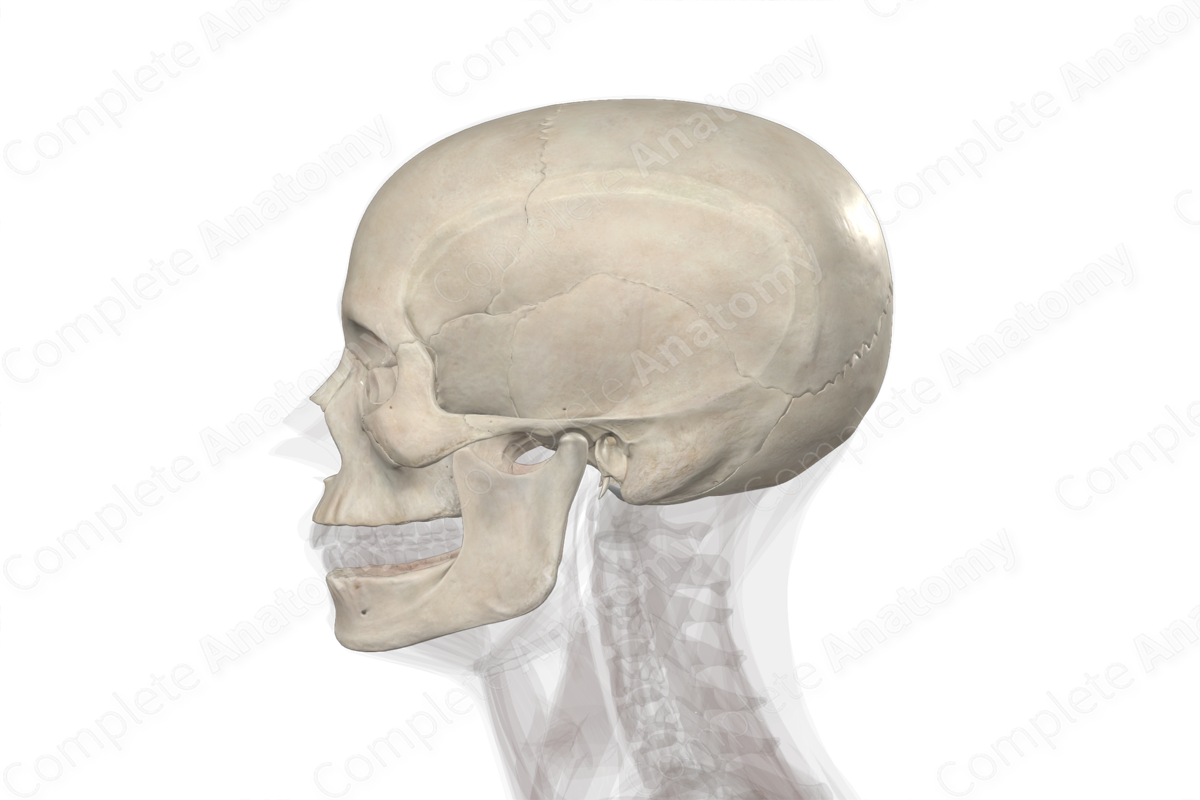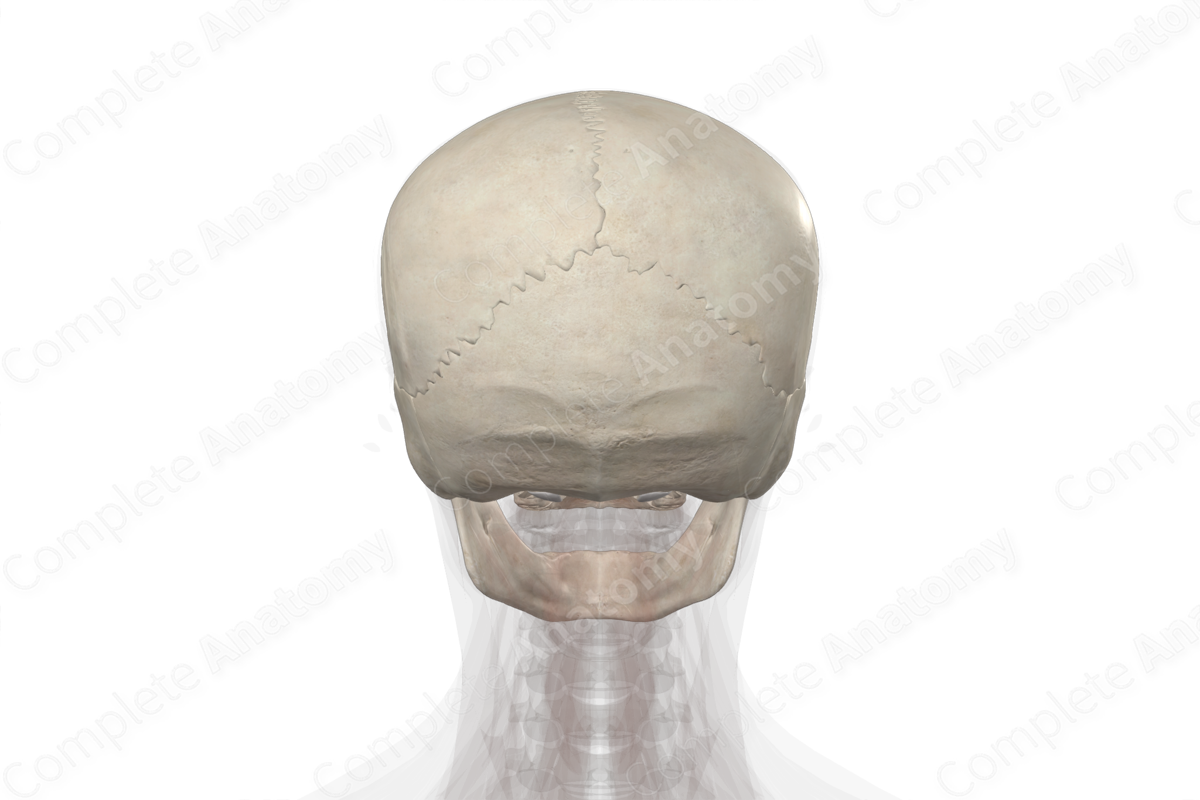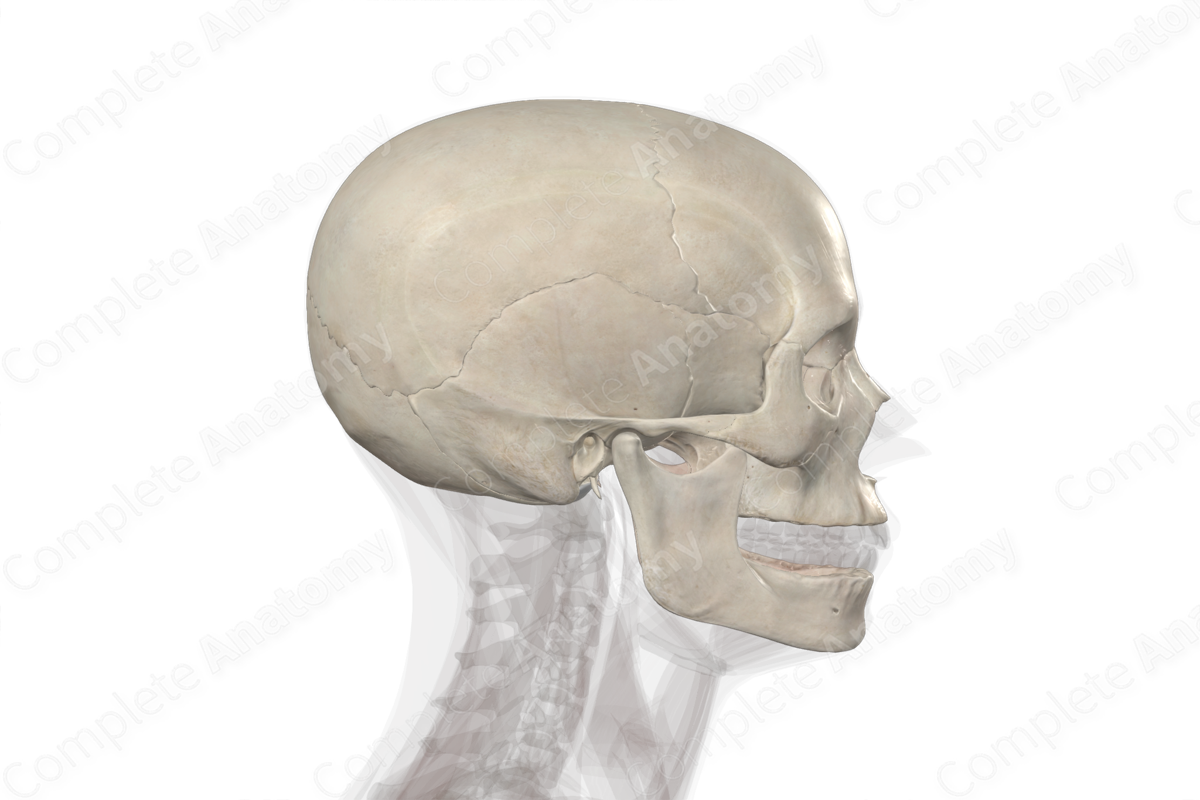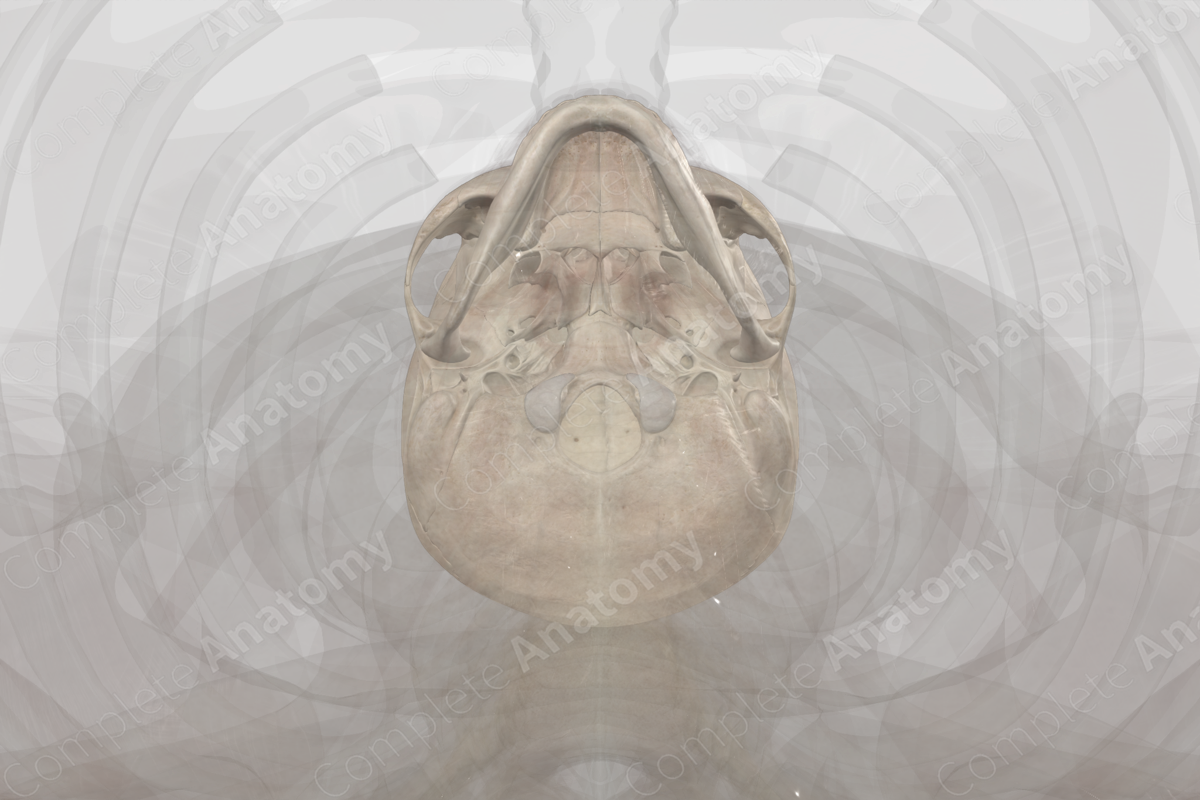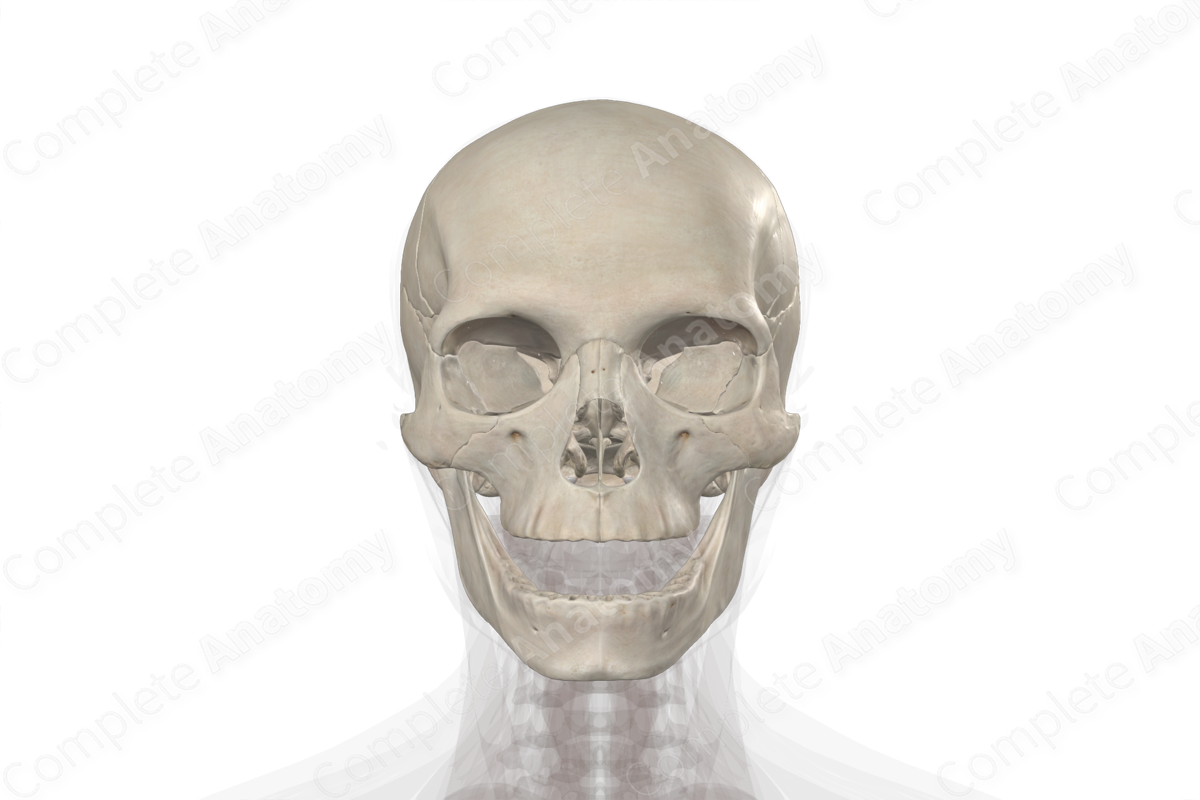
Description
The bones of the cranium (cranial bones or bones of the skull) is one of the groups of bones of the head (excluding the ossicles and the teeth). For classification purposes, the twenty-two bones of the skull can be arbitrarily divided into two groups:
- bones of the neurocranium;
- bones of the viscerocranium.
Overall, the bones of the cranium:
- provide protection to the brain;
- provide the skeletal framework for the cranial, orbital, nasal and oral cavities;
- provide attachment sites to muscles of the head and neck regions;
- accommodate the teeth and the sensory structures for sight, hearing, smell and taste.
Most of the bones of the cranium articulate with each other via fibrous joints known as sutures. Other types of joints found in the cranium include synovial joints (e.g., temporomandibular joints) and synchondroses (e.g., sphenooccipital synchondroses). Some bones of the cranium are pneumatized bones that contain air cells or sinuses. Although this property makes them relatively light, it also makes them more fragile.
Variations
The bones of the cranium are some of the most sexually dimorphic bones in the skeletal system. Generally, male cranial bones tend to be robust and heavier than females. The muscular attachment sites are more pronounced and defined in males, giving the cranium a more rugged appearance, while the cranium of females is more rounded and generally smoother in contour (Standring, 2020).
References
Standring, S. (2020) Gray's Anatomy: The Anatomical Basis of Clinical Practice. 42nd edn.: Elsevier Health Sciences.
Learn more about this topic from other Elsevier products
Bones of the cranium: Video, Causes, & Meaning

Bones of the cranium: Symptoms, Causes, Videos & Quizzes | Learn Fast for Better Retention!

